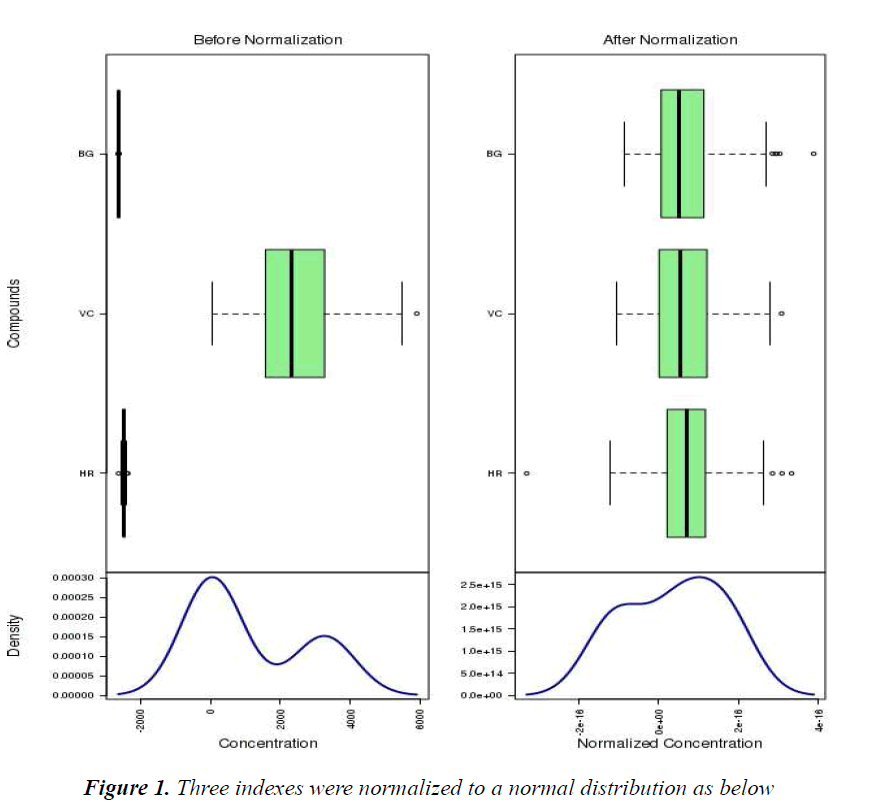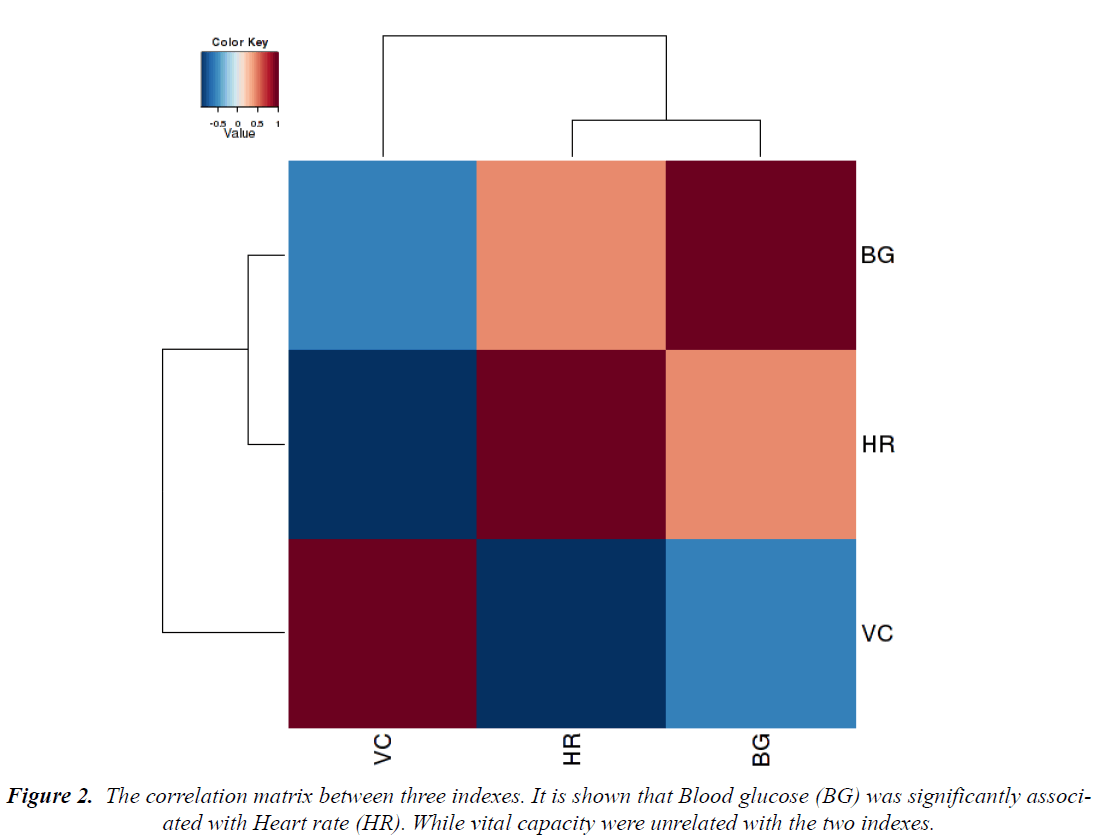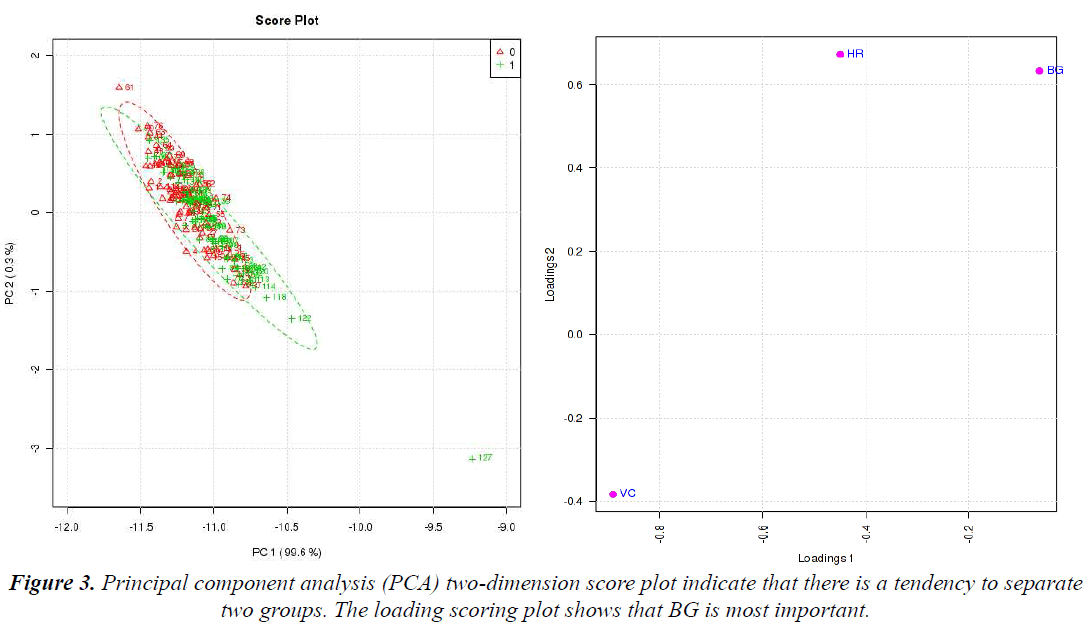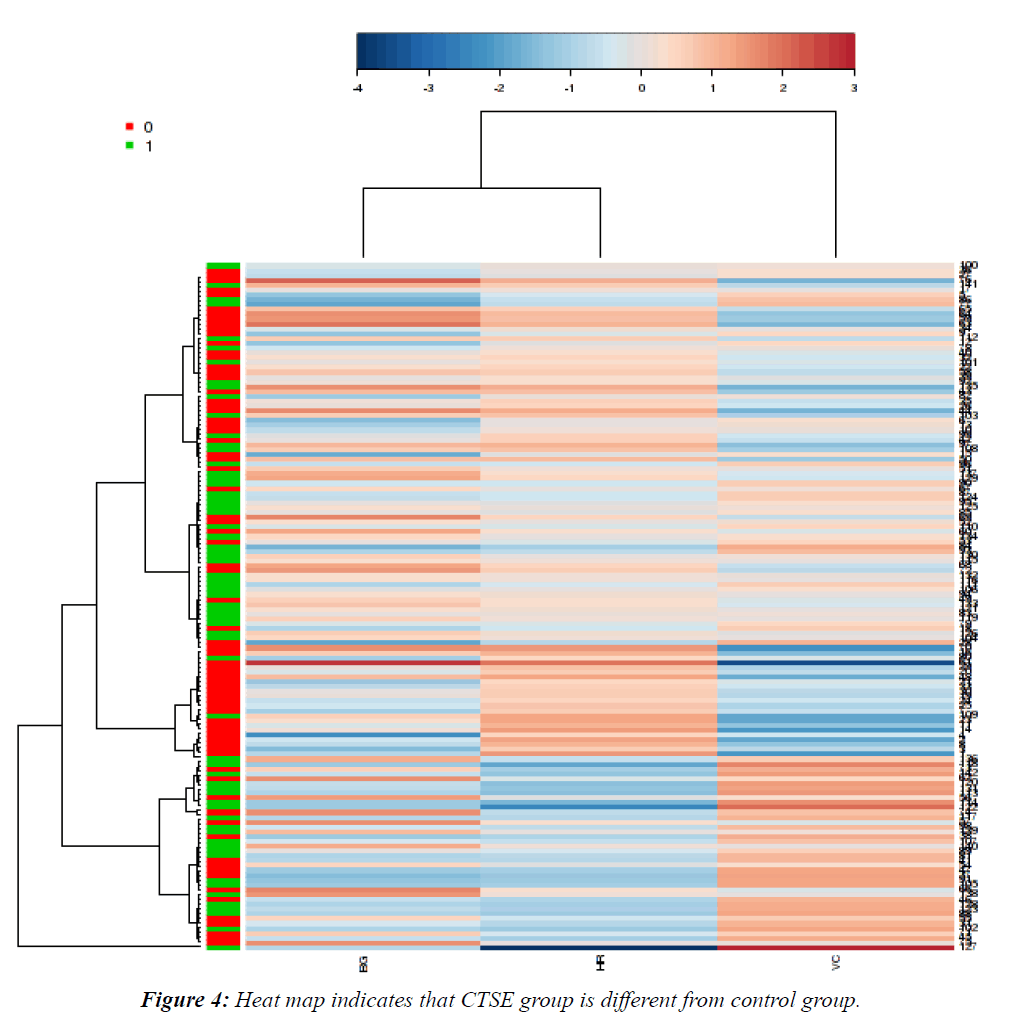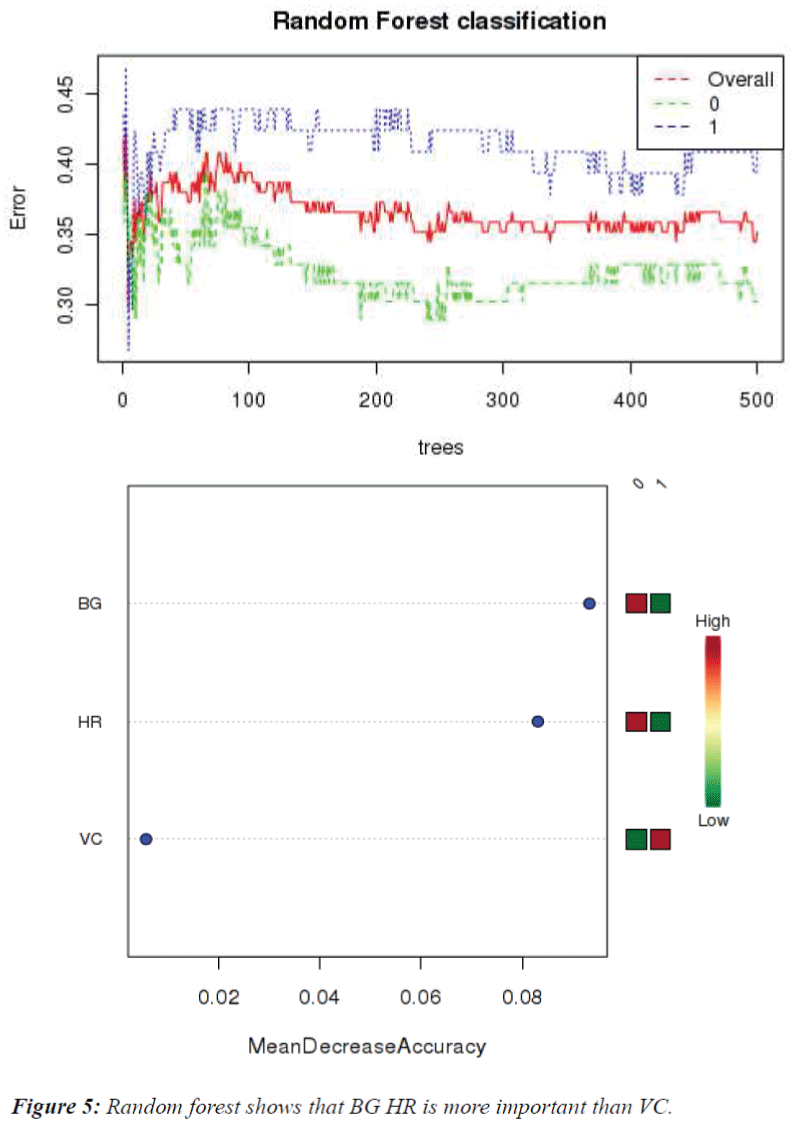ISSN: 0970-938X (Print) | 0976-1683 (Electronic)
Biomedical Research
An International Journal of Medical Sciences
- Biomedical Research (2015) Volume 26, Issue 1
Data mining based on statistical analysis of Chinese Traditional Setting-up exercise on healthy undergraduate students.
Tiangang Li1#, Qingqiong Deng2#, Yongming Li1, Junyue Zhang3, Yu Sun4 and Xiaohong Gu1
1Beijing University of Chinese Medicine, 11 Bei San Huan Dong Lu, ChaoYang District, Beijing 100029, P. R. China.
2College of information science and technology, Beijing Normal University, Beijing 100875, P. R. China.
3China-Japan Friendship Hospital, Beijing, 100029, P.R. China
4China Agricultural University, 17 Qinghua Donglu, Beijing 100083, People’s Republic of China
- Corresponding Author:
- Xiaohong Gu
Beijing University of Chinese Medicine 11 Bei San Huan Dong Lu ChaoYang District Beijing 100029 P. R. China.
Accepted date: September 07 2014
Objective: To investigate the effects of Chinese Traditional Setting-up Exercise on blood glucose, heart rate and vital capacity of healthy undergraduates Methods: 200 undergraduate volunteers were selected according to the diagnostic standards and inclusion criteria. They were randomly and evenly allocated into the two groups. The case group practiced the Chinese Traditional Setting- up Exercise and the control group practiced the 8th Broadcast Gymnastic Exercise, 3 times a week for 4 weeks. Three biological indexes were measured half an hour before and after the exercise. From t test (single variable), correlation (two variables) to multi-variables, such as Principal component analysis, Heat map and Random forest, a systematical method was presented to understand the data. Results: There were significant differences before and after the exercise in both two groups. Chinese Traditional Setting-up Exercise performed better than the 8th Broadcast Gymnastic Exercise in reducing BG, balancing HR and enlarging VC. They were interacted with each other to separate control group from case group with an accuracy rate of nearly 80%. The most important one is BG, the less important one is HR and VC is of the least importance. Conclusion: Systematically statistical methods could discover intrinsic rules behind the data. It has been proved that “Chinese Traditional Setting-up Exercise” performed better than “8th Broadcast Gymnastic Exercise” in reducing BG, balancing HR and enlarging VC of undergraduate students, so the “Chinese Traditional Setting-up Exercise” was suitable for popularizing among universities.
Keywords
Chinese Traditional Setting-up Exercise; Blood glucose, Heart rate, Vital capacity, Systematic method.
Introduction
Increasing evidence shows that Tai Chi or Qigong in Traditional Medicine plays a key role in fighting against diseases and maintaining human health [1-2]. Due to its noninvasive, side effect-free, easy-learning characteristics, more and more people are willing to practice it. Moreover, in medical society, researchers and educators pay growing attention to popularize it in medicine and education worldwide.
Recently, several surveys reveal that the overall physical and psychological conditions of undergraduates are not optimistic, including obvious weaknesses, such as poor endurance and weak physique, which shows a declining trend, the cutting down vital capacity, such as, the rate of obese children, significantly increasing number of overweight children, And the constantly high-level myopia rate. Apart from these mentioned above, anti-setback ability, will power, sense of competition, crisis consciousness, and spirit of cooperation have become worse. While there are greater t advances of the traditional health maintenance sports than those of the west competitive sports in the aspects of physical and psychological health and integrated harmonious development. This effective combination of traditional health maintenance sports and school sports, with the aid of promotion methods of Broadcast Gymnastic Exercise, could integrate the national traditional health maintenance sports into school sports education, which can not only promote traditional culture to be inherited by most undergraduate, but also can inject more vitality into the development of school sports. In this way, it is able to boost the reform of physical education to develop undergraduates' physical and mental quality, improve the health level and increase the cultural accomplishment.
Broadcast Gymnastic Exercise has been the most widely popularized activity in school, which has been playing an important role in improving undergraduates' health and increasing the learning efficiency [3]. However, researches have revealed that the evolution of Broadcast Gymnastic Exercise has experienced a series of important stages. As a representative of the public Broadcast Gymnastic Exercise, "8th Broadcast Gymnastic Exercise" has improved student’s physical conditions, but it is still focusing on the fitness, health maintenance, which is not able to reach the goal of promoting the harmonious development of contemporary undergraduates both physically and psychologically. Moreover, it has little association with Tai Chi or Qigong and is hard to inherit the quintessence of Traditional Chinese Medicine. Therefore, it is of significance to create a new kind of Setting-up Exercise combined with the traditional health maintenance sports and Tai Chi or Qigong, which is suitable for the harmonious development of the body and mind. "Chinese Traditional Setting-up Exercise" was elaborately created by professors in sport education department of Beijing University of Chinese Medicine, which is of following main features: simple actions, clear rhythm, profound connotation, easy and practical. Each section could pointedly regulate the corresponding internal organ's function so as to relieve fatigue and maintain health.
On the basis of physiologic and medicinal principles, Chinese Traditional Setting-up Exercise belongs to the meridian movement, and its slow gentle movement is able to stabilize and control blood sugar level effectively.
However, the scientific evidence of its effectiveness is rarely investigated. Therefore, this experiment, in which the Chinese Traditional Setting-up Exercise was compared with the 8th Broadcast Gymnastic Exercise plays a vital role in popularizing it. When analyzing the collected data sets, information technologies, including statistical methods, are key tools to compare the results of the two exercises.
Generally, traditional statistical methods, such as Twoindependent samples t test, Pearson Correlation, Linear Regression methods, implemented via information technology by various kinds of programming languages are successfully applied in medical domain to do comparison or compute association. However, due to the characteristics of complexity, multi-dimension and nonlinearity of exercise data, advanced statistical methods, such as Principal component analysis [4], Random forest [5], need to be applied to compare health protection effects of two exercises.
In this paper, we included a group of two hundred of undergraduates and randomly separate them into two groups. One group practiced the 8th Broadcast Gymnastic Exercise. The other group did Chinese Traditional Setting- up Exercise. Heart rate (HR), Blood glucose (BG) and Vital capacity (VC) were physically or chemically assayed to compare the effects of these two exercises. T test, Pearson Correlation, Principal component analysis, Hierarchical cluster analysis and Random Forest were synthetically applied to analyze the data and evaluate the health protection advantages of Chinese Traditional Setting- up Exercise over the 8th Broadcast Gymnastic Exercise.
This paper is organized as below. Section 2 is devoted to describing materials and methods used to collect healthy volunteers, assay biological indexes and analyze the associated data. Section 3 presents the analyzed results. Conclusion and Discussion are given in Section 4.
Materials and Methods
General information of healthy undergraduate volunteers
200 undergraduates, who met the inclusion criteria, had been randomly enrolled from the sophomores in Beijing University of Chinese Medicine from May 2009 to July 2009. They were randomly divided into two groups: case group (Chinese Traditional Setting-up Exercise Group)" and control group (the 8th Broadcast Gymnastic Exercise Group)" by randomized digital table method. Among the 100 volunteers in the case group, there were 45 males and 55 females, aging from 16 to 24 years old. The average age was 20.2 and the tallest of them was 1.89 m, the shortest was 1.52 m, so the average height of them was 1.73 m. Their weight ranged from 44kg to 98kg and had an average weight of 61.3kg.
Among the other 100 volunteers in the control group, there were 46 males and 54 females, aging from 17 to 24 years old and their mean age was 20.3. Their height ranged from 1.52m to 1.90m and the mean was 1.72m. And their weight varied from 41kg to 96kg, with an average value of 60.7kg; detailed data were shown in the Table 1. There is no significant difference found between two groups, which indicate that they have homogenous baseline and are comparable.
There was no statistical difference between comparisons of baseline data in two groups (P > 0.05) with comparable significance.
Inclusion and exclusion criteria
Volunteers meet the following four conditions can be included in the study:
(1) Sophomore Chinese undergraduates in Beijing University of Chinese Medicine.
(2) Healthy without diabetes, high blood pressure or other serious diseases.
(3) Enough spare time and fond of fitness.
(4) Willing to participate in this research and able to strictly abide by the implementation of the project requirements.
Moreover, there are also three exclusion criteria:
(1) Receiving other relevant treatments, this may affect the effects in this research.
(2) Engagement in other activities or sports may affect this research.
(3) A person who has any irregular habit.
Grouping method and practicing methods
After filling in the basic information, 200 undergraduates were randomly divided into the "test group (100 cases)” and the "control group (100 cases)” strictly by randomized digital table method, and the test group practiced the Chinese Traditional Setting-up Exercise while the control group practiced the 8th Broadcast Gymnastic Exercise.
(1) Practice period: 1 month (May 26, 2009 -- June 24, 2009).
(2) Practice time: “Chinese Traditional Setting-up Exercise” and "8th Broadcast Gymnastic Exercise” were practiced three times per week, and each time lasted for twenty minutes.
(3) Practice site: West playground in Beijing University of Chinese Medicine.
(4) Assay time: The blood glucose value was measured two times respectively before and after the practice.
(5) Processing scheme for the unforeseen circumstances:
In the process of practice, if there were any adverse reactions such as syncope, following methods would be implemented: laying down the body flatly, loosening the belt and drinking some warm water.
If these methods were not valid, emergent treatments would be implemented in Chinese and Western medicines. Although these unforeseen circumstances were rare, attention and precautions were still needed.
Assay of Blood glucose, Heart rate and Vital capacity
200 subjects were respectively trained with "Chinese Traditional Setting-up Exercise" and “8th Broadcast Gymnastic Exercise" by special training personnel. During this research, 200 subjects got up at 6 o 'clock in the morning every day, receiving the test of blood glucose value by professional personnel, and two groups practiced "Chinese Traditional Setting-up Exercise" or "8th Broadcast Gymnastic Exercise" respectively. 200 subjects would receive the test of blood glucose value by professional personnel at 8 o 'clock after movements, and they were not allowed to eat anything until the second test of blood glucose.
Heart rate was measured by Electronic sphygmomanometer (Omron HEM7101). Vital Capacity was measured by FVC test instrument (EP-FC, Beijing Taimeiquan Inc.)
Systematical analysis methods
The index was firstly scaled. T test was employed to compare the variation of indexes between two groups. Two-independent samples t test was used to detect significant changes between case and control. Pair-sample t test was used to compare significant changes of an index before and after an exercise. P<0.05 was considered as significance. Correlation matrix was computed between each pair of the three indexes.
Principal component analysis was then employed to separate two groups after exercise and to investigate the importance of indexes. Hierarchical cluster analysis was performed not only on 200 samples, but also on three indexes. Heat map technique was used to intuitionally visualize the cluster results [6]. Random forest classification combined with feature selection was performed to study the interaction between three indexes.
Results
Statistical Analysis of Blood Glucose Change before and after Movement in Chinese Traditional Setting-up Exercise Group and 8th Broadcast Gymnastic Exercise Group
As shown in Table 2, it was found that three biological indexes had a homogeneous baseline, that is to say, before the two exercises; the mean of each index is of no significant difference. After the exercise, both two groups can significantly improve physical conditions of undergraduate students. But the case group performed better than control group. However, the importance and interaction between three indexes were still not discovered, which needed further investigation.
Systematical analysis results
Before advanced data analysis, the three indexes should be normalized to a same range scale. As depicted in Figure 1, after normalization, the three indexes were valuing in the same range. And the normalized concentration followed a normal distribution. Therefore, Pearson correlation was used to describe association between each index pair. It was found that BG and HR associated with each other. But they had a negative association with VC (Figure 2). The three indexes were combined in batch to separate case and control group in an unsupervised way by means of PCA. It can be discovered that case group were slightly different from the control group. The first component occupied a ratio of 96% in total variance, which meant that it could replace the three indexes. As given in Figure 3, the case group was mostly in the right quadrant. The loading plots of PCA showed that BG and HR played a much more important role in separating two groups than VC. Moreover, as illustrated in Figure 4, the Hierarchical cluster analysis combined with Heat map depicted that the two groups could be approximately separated (The same color is approximately cluster together). Finally, Random forest classification method combined with feature selection showed that the interaction between three indexes played a key role in separate case group from control group. The accuracy achieved a level of nearly 80% (Table 3), which meant that VC also played a vital role in interacting with BG and HR (Figure 5). The mean decrease accuracy given in the bottom of Figure 5 indicated that BG was most important. The less important ones were HR and VC, which was in accordance with the former founding.
Note: Comparison of the two groups **P<0.01,*P<0.05. There were significant statistical differences before and after movement in two groups, and the blood glucose of both Chinese Traditional Setting-up Exercise and 8th Broadcast Gymnastic
Exercise Group, could be reduced in the view of mean value and clinical literatures to control the stability of the blood glucose.
Table 2 : Comparison of Blood Glucose Change before and after Movement in Two Groups (x±s)
Conclusion
In summary, both "Chinese Traditional Setting-up Exercise" and " 8th Broadcast Gymnastic Exercise" are able to maintain health care of undergraduate students. But the former performs better than the latter. By means of systematically data analysis of the two groups, it can be seen that BG is associated with HR. They combine with VC to separate two groups with an accuracy of nearly 80%. It is concluded that "Chinese Traditional Setting-up Exercise" can replace "8th Broadcast Gymnastic Exercise" in daily exercise of students.
Discussion
The traditional health maintenance sports have been affected by the Chinese traditional culture of Confucianism, Buddhism, Dao, Medicine, and Martial art for thousand years, and gradually formed a comprehensive sports health maintenance system, praising highly the holistic view of body and spirited the health care view of Qi- Blood harmony, which focus on the appropriate physical activity, and is suitable for different age groups and different physique. Western sports focus on the body movement; emphasize ion taking the energy from outside, and pay attention to the physical form, especially the surface skin and thews, which can practice the physical form but not the spirit, so it couldn't establish the real comprehensive health care ideological system.
According to modern medical researches that sports are not only able to improve insulin function and reduce the blood sugar, but also to reduce low-density lipoprotein cholesterol (ldl-c) and improve high-density lipoprotein cholesterol (hdl-c). At the same time, sports are beneficial for enhancing the cardiopulmonary function, promoting peripheral circulation, and preventing osteoporosis. Acute sports, such as 100m race, weight lifting, playing basketball, etc., are able to promote the utilization of glucose in muscle and organs so as to reduce the content of glucose in the blood; however, the blood glucose level would lose control without sports. For undergraduates, it is significant to promote the utilization of sugar in muscles and organs by practicing the Setting-up Exercise daily. Simultaneously, it could reduce the insulin level in blood to control the glucose directly or indirectly and improve insulin resistance. Apart from these, proper movement is better for reducing weight and improving insulin sensitivity to reduce blood sugar, which is particularly obvious for obese undergraduates.
The blood glucose value will rise during the movement or immediately after it, which is responsible for energy supply and speeding up metabolism. However, if the blood glucose was measured half an hour after the movement, it could be seen that the blood glucose would fall down, for the former movement had consumed energy, which was called “Improvement of Insulin Sensitivity” mentioned above. In fact, this is the corresponding benefit from the long-term exercise, representing by the relationship between running and heartbeat, when you are running, the heartbeat will speed up, but if you insist running for a long term, the usual heartbeat will slow down.
The systematical statistical methods were first presented here to analyze the data. From single variable (t test), two variables (Correlation methods) to multi-variables (PCA, cluster and classification), we synthesize the data analysis results to discover the role of an index in separating two groups and the interaction among them. In further studies, the sample volume and the number of indexes should be enlarged to reach a higher accuracy.
Acknowledgement
The research was supported by State Administration of Traditional Chinese Medicine (No. GJYJZ12026) and Project of Beijing University of Chinese Medicine (XJY12021 and 2014-JYBZZ-JS-079)
References
- Chenchen W, Christopher H. Schmid, Ramel R, Robert K, Janeth Y, Don L. G, Yoojin L, and Timothy M. A Randomized Trial of Tai Chi for Fibromyalgia. New Engl J Med 2010; 363(8): 743- 754.
- Leung RW, Alison JA, McKeough ZJ, Peters MJ. A study design to investigate the effect of short-form Sun-style Tai Chi in improving functional exercise capacity, physical performance, balance and health related quality of life in people with Chronic Obstructive Pulmonary Disease (COPD). Contemp Clin Trials 2011; 32(2): 267-272.
- Chuanjuan Z. The Effects of 8th Broadcast Gymnastics Exercise on Heart Rate Variability and Cardiopulmonary Function in Female Undergraduates, Master thesis, Shandong Normal University, 2012.
- Gao B, Lu Y, Sheng Y, Chen P, Yu LL. Differentiating Organic and Conventional Sage by Chromatographic and Mass Spectrometry Flow-Injection Fingerprints Combined with Principal Component
- Analysis. J Agric Food Chem 2013; 61(12): 2957- 2963.
- Yu H, Chen J, Xu X, et al. A systematic prediction of multiple drug-target interactions from chemical, genomic, and pharmacological data. PLoS One, 2012; 7(5): e37608.
- Xia, J, Mandal, R, Sinelnikov, I, Broadhurst, D, Wishart, DS. MetaboAnalyst 2.0 - a comprehensive server for metabolomic data analysis. Nucl. Acids Res 2012; 1-7.



